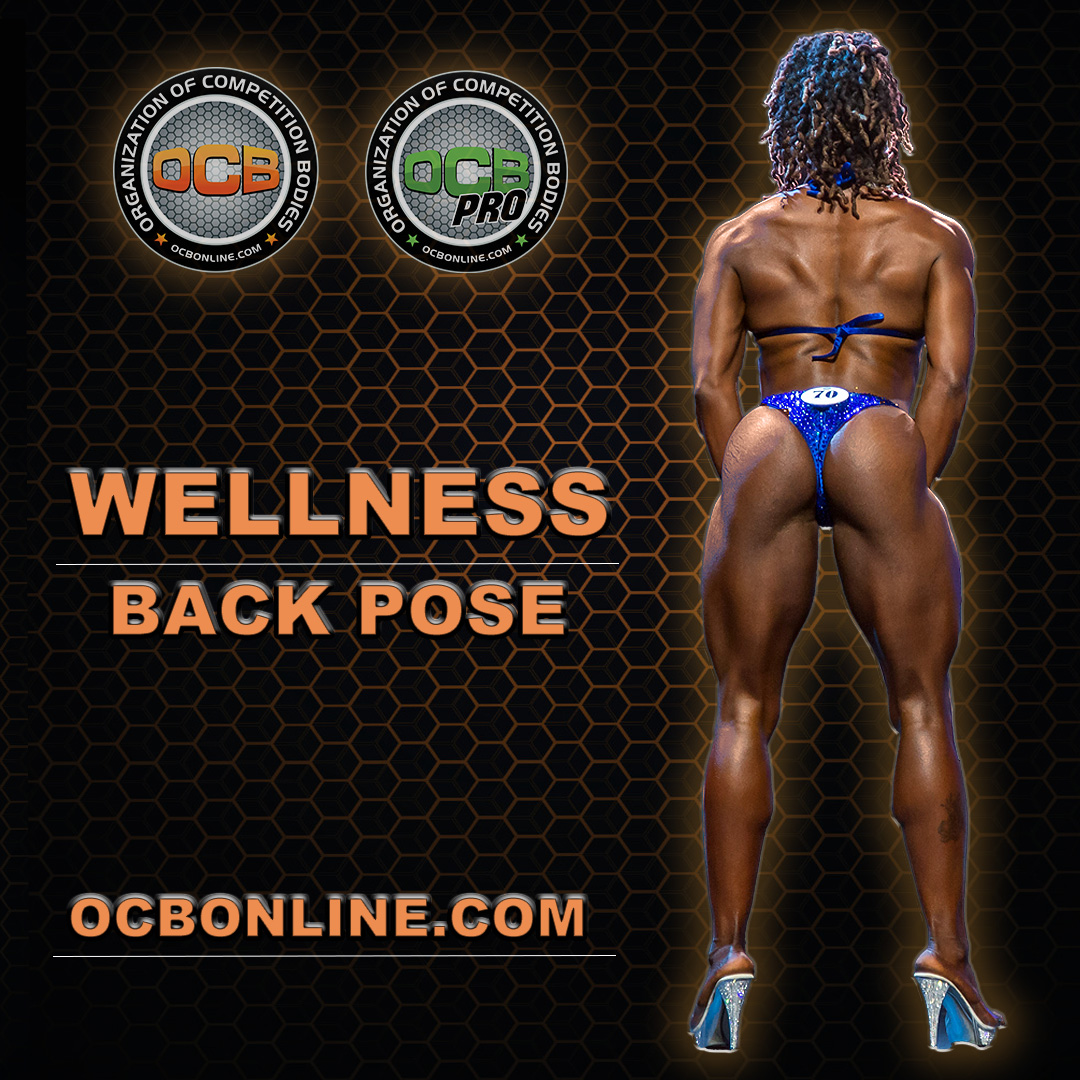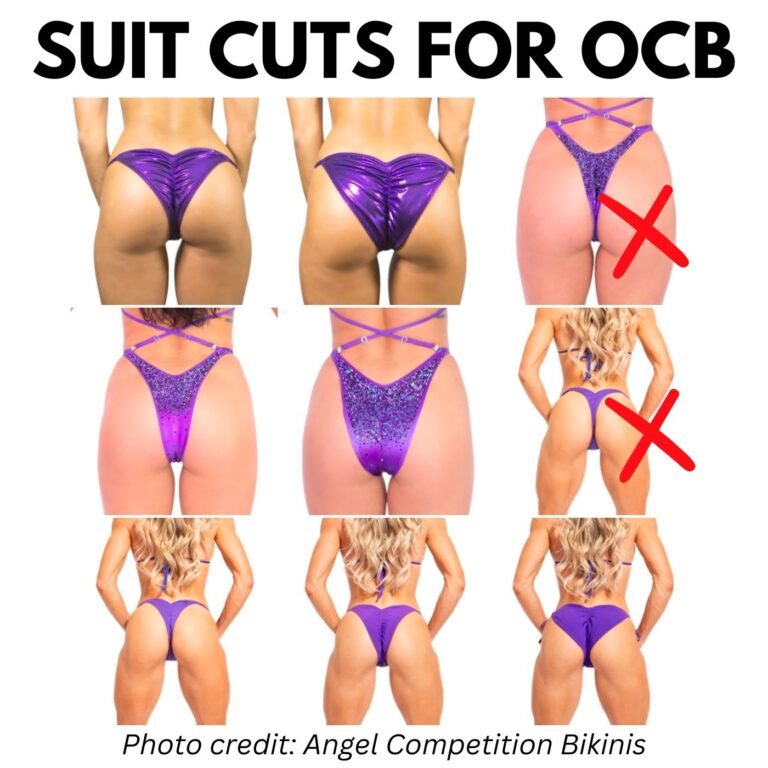Wellness Guidelines




Wellness competitions consist of 2 parts: Group Comparisons, which are scored and Individual Presentations, which are not scored.
Judging Criteria
The Wellness physique is unique as it is the only category where an athlete should NOT have upper and lower body symmetry. Wellness athletes should display a more dominant, muscular lower body when compared to the upper body. The upper body should have muscle development, but to a lesser degree than the lower body. Wellness athletes should have full rounded glutes, sweeping quads, hamstrings, and calves. The upper body should display back and shoulder development without being overly dense, wide or striated.
Wellness competitors should have a muscular physique that is lean, but not grainy, striated, or overly vascular.
Symmetry: the lower body muscularity should be dominant in comparison to the upper body. The lower body should clearly defined muscle.
Definition: Muscular, lean and detailed muscles that are more defined than in bikini, but less defined than in figure. Legs should display some quad/hamstring separation. Glutes should be round and hard with a visible tie-in to the hamstrings. Abdominals should be lean and defined, but not overly etched. Arms, back, and shoulders should be full and muscular, but not dominant to the lower body.
Size: Thick, sweeping quads and hamstrings, round, hard glutes and calve development. Arms, back, and shoulders should be full and muscular, but not grainy or striated.
Group Comparisons
Athletes will enter the stage together as a class, stand on a pre-marked line, and immediately get into their front pose. The head judge will call for competitors to “quarter turn to the right.” Competitors will be given time to transition and be viewed by the panel in 4 poses: front, side, rear, and side. The head judge will continue with quarter turns until the entire lineup has been scored by the judges. Not performing poses in the manner specified may result in lower scoring from judges.
At any time, the head judge may request competitors switch places on stage. Athletes should listen for their number, raise their hand if called, and look for the other competitor to raise their hand. When called, competitors should then walk respectfully over to the other location and resume their posing position. Please note that in the OCB, an athlete’s location on the stage is not an indicator of placement.
When in the back pose, wellness athletes should pull long hair aside to avoid obstructing the view of the back in the rear pose.
Front Pose
Competitors face front with one leg forward and the knee slightly bent. The same side arm should hang down in a natural position, not touching the side of the body. The hands and fingers of this arm should appear relaxed, not pointed, spread out, or clasped in a fist. The arm opposite from the judges should be bent with the fist positioned on the waist or hip
Side Pose
While in the side pose, athletes should face the judges. The leg facing the judges may be straight or bent. The arm facing the judges should be down in a natural position not touching the body. The upper body should be turned slightly toward the judges so that the back elbow and shoulder are visible. The back leg should be bent and athletes should refrain from squatting or sitting in this pose.
Back Pose
Competitors will face the rear of the stage. Hair should be pulled aside, if needed, to avoid obstructing the view of the back. Feet should be placed approximately shoulder width apart and not crossed. Refrain from standing in a wide straddle. The back should NOT be posed to show width as one would in Figure or Women’s Physique. Arms should be slightly bent while hands are placed gently onto the thighs. A slight arch in the back or forward lean is acceptable. Refrain from bending forward excessively in an obscene manner.
Individual Presentations
The individual presentation portion is the stage walk. The individual presentation is not factored into placement scoring. At the promoter’s discretion, walks may be performed in a “I” or “T” formation. Some events will use house music, while other events may allow competitors to submit their own music. If you are not sure which type of walk or music offerings are being offered at a particular event, read the event registration details or contact the event promoter directly.
“I” Walk – Competitors walk directly to the rear center of the stage, which will be marked with an “X.” They will pause briefly in a pose of their choice, then walk directly to the front center stage, which will also be marked with an “X.” Here they will perform quarter or half turns with poses of their choice to provide a full view of their physique. They will then exit the stage. “I” walks are performed to house music. Athletes should be prepared to enter and exit from either side of the stage as different venues have different stage layouts.
“T” Walk – Competitors will be given 30-60 seconds (times will vary depending on the event) to pose and perform to music. Competitors will walk directly to the rear center of the stage, which will be marked with an “X.” They will pause briefly in a pose of their choice, then walk directly to front center stage, which will also be marked with an “X.” Here they will perform quarter or half turns with poses of their choice to provide a full view of their physique. To form the “T,” competitors will then walk to the left or right corner of the stage where there will be an “X” marked for them to pause and strike a pose. They will then cross to the other corner of the stage, stop at the “X” and hit another pose. The competitor will then return to the center “X” on the stage where they may hit another pose and exit. Athletes should be prepared to enter and exit from either side of the stage as different venues have different stage layouts.
View a tutorial here. Watch a class being judged